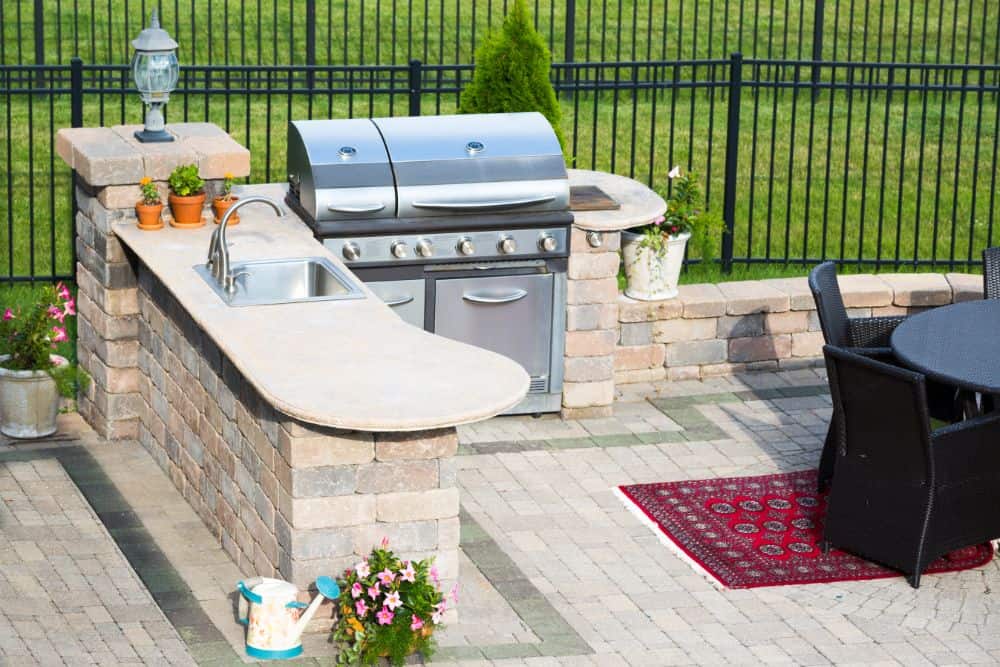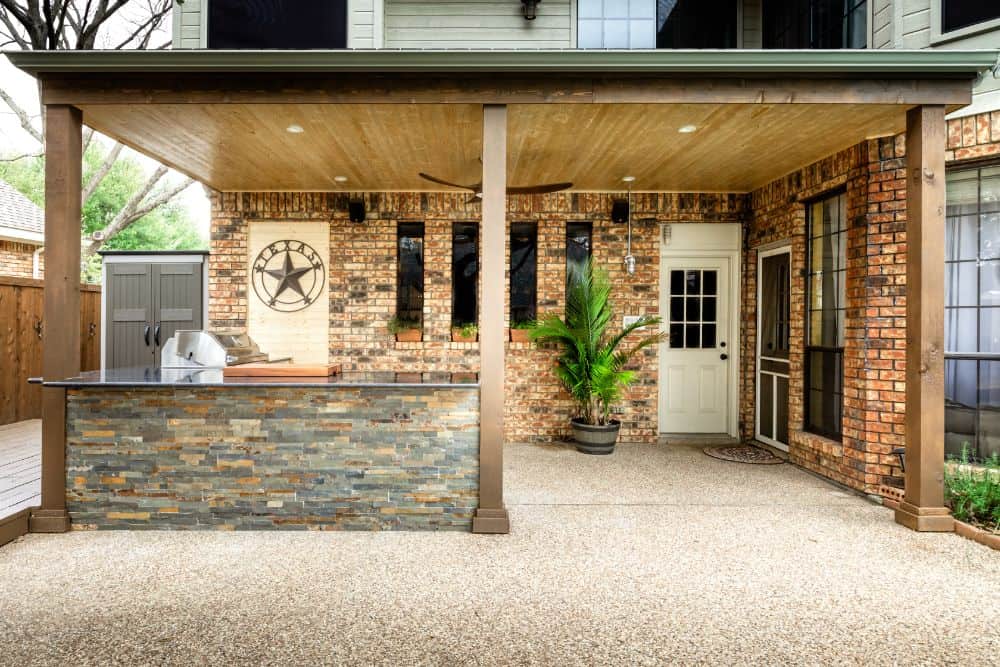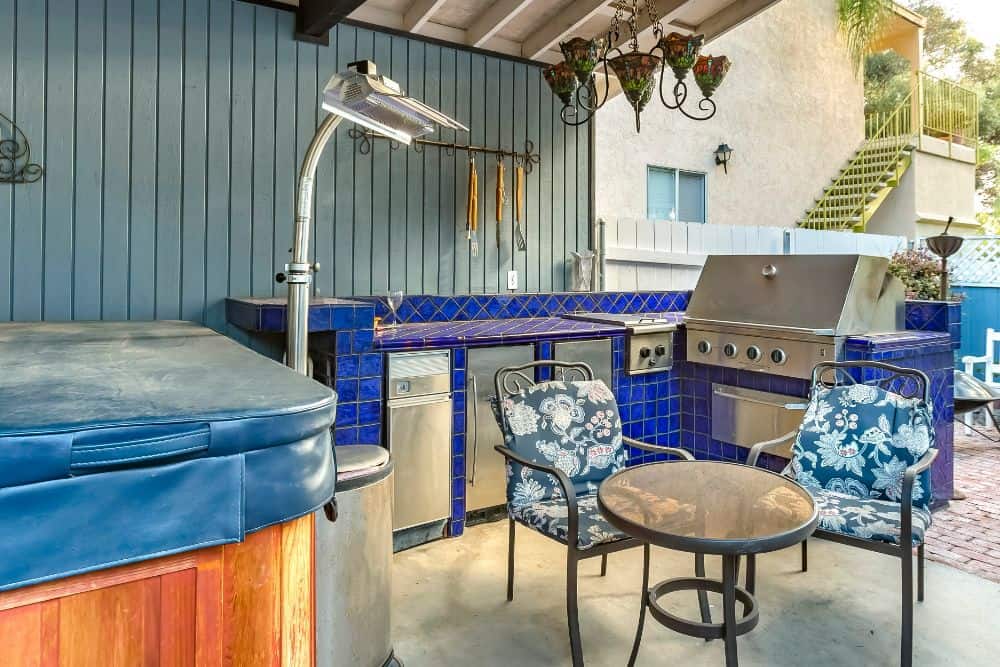Not having access to a full barbecue can be challenging when you love to grill. But, when you’re craving a juicy steak or fire-roasted vegetables, a great grill is the only way to get it.
Fortunately, you don’t need a complete outdoor kitchen to grill great meats and veggies. In fact, you don’t even need a traditional barbecue. Instead, you can invest in a built in countertop grill to satisfy your barbecuing needs.
A built in grill is installed as a permanent fixture on your counter. Instead of a freestanding grill, you’ll have just the cooking surface.
DCS Countertop Outdoor Built in Grills
Similar to the full-size grills you’ll find in a kitchen or backyard, you have multiple fuel types for built in countertop grills. You can find countertop grills with gas, charcoal, wood, or electric power.
A built-in countertop grill is the way to go if you want to build the most complete outdoor kitchen. Not only does it add a dash of luxury, but it’s also more convenient than a bulky grill that moves around. And, of course, you have the standard benefits of a grill, including little to no need for cookware.
Countertop grills are popular for several reasons. Many people install them in their outdoor kitchens to save space and form a cohesive kitchen layout.
Those who install countertop indoor grills often do so because they don’t have space outdoors for a grill. They’re ideal in apartments, condos, or homes that don’t have a backyard or deck suitable for grilling.
Countertop grills come in all shapes and sizes. Fortunately, you have several different fuel and power options, so you’ll be able to find something that works for your indoor or outdoor kitchen. From portable grills you can stow in an outdoor cabinet to built-ins you can incorporate into your kitchen toolset, there’s something for every chef.
The main types of built in grills you’ll find for your countertop are:
The type you choose will depend on your needs, space, and plans. Below are a few examples of built in countertop grills.
Gas grills come in two main forms. You can find standard gas-fueled that provide the clean grill marks that make chicken and burgers look perfect. Or, you can purchase flat top grills or griddles that are gas-fueled. Many come with a convenient lid you can use to help with the cooking process, while others are open top. Both are excellent options.
However, they each serve different purposes. Both options run on either propane or natural gas. For home use, the use of natural gas makes this an outdoor grill. Burning of natural gas can be a carbon monoxide risk - making this type of grill only suitable for outdoor cooking.

A flat-top gas grill is perfect for a kitchen. Not only can you cook directly on it without pots or pans, but you can also use it just like you would a stove. You can boil water, reheat leftovers, sear a steak, or cook a big batch of scrambled eggs all in one space. The best part is that they’re easy to clean. The only downside is that you don’t have an open-flame option.
Standard countertop gas grills like Char-Broil’s Medallion Series provide a built-in option for grilling your food. Gas grills are a reasonable alternative to charcoal grills because they provide flamed-grilled flavor without the sooty smoke of a charcoal grill. Of course, the only problem is that you don’t get the same smoky flavor you get from charcoal or wood chips.
Electric countertop grills are the ideal option for indoor kitchens. Similar to gas grills, you can find standard grills and griddles. Many people like to have an electric indoor grill because they’re smokeless (and are also called a "smokeless grill", making them a good choice if you want to avoid fuel or fire.
An electric grill uses heating elements under the cooking surface, similar to an electric stove. They’re an easy substitute for homeowners who don’t have a gas line attached to their homes or prefer not to use gas. Some companies, like Kenyon, offer electric grills that offer a nearly identical cooking experience to gas.
The main downside to electric grills is the lack of precision heat control. However, they fit smoothly onto any counter and eliminate the need for gas tanks or lines. In addition, since they don’t take up much vertical space on your counter, you can easily include cabinet storage underneath.
If you’re fortunate enough to have space for a full outdoor kitchen and want a true barbecue experience, a charcoal grill is the way to go. Some people aren’t fans of charcoal grills because they can be messy or a hassle to clean up, but there’s no substitute for the char-grilled flavor you get with smoky coals.
Perhaps most frustrating to charcoal lovers is that you can’t use a charcoal grill indoors. So, if you don’t have the space for a full outdoor kitchen, you’ll have to stick with electric or gas for your built-in countertop.
However, if you have space for an outdoor kitchen, the sky’s the limit when it comes to charcoal grills. You can find standard covered options like the Fire Magic 30" or splurge for an open-top grill, like the Tagwood Santa Maria grill.
A countertop grill might seem like an excellent option on the surface. And in most instances, it is. However, there are still things you should consider before committing to a specific grill or grill type.

Obviously, the first thing you should decide is whether you want an indoor or outdoor countertop grill. If you don’t have space outdoors for a grill, the decision will be simple. However, if you have ample space inside and outside, you need to determine which area will be best for your grill.
If you have the budget, you could install a countertop grill in your indoor and outdoor kitchen. However, when you install your grill in your outdoor kitchen, you’ll have more flexibility with fuel type and size.
Depending on the type of grill you want, you might need to allot quite a bit of counter space for your grill. Gas grills tend to take up a lot of space. For example, the RJC40A grill by RCS takes up a whopping 40 inches of space. Of course, that doesn’t factor in the workspace you’d need around it.

On the other hand, you can find flat tops and char grills that take up minimal space. For example, the Wee Griddle by Le Griddle is a compact stainless steel flat top that’s only sixteen inches wide. Not only does it grill food, but it also doubles as a pan surface. So, to determine what size grill you should purchase, take a look at your kitchen’s square footage. Then, you can determine how much space you're willing to dedicate to a grill.
Another thing to consider when choosing your built in countertop grill is your plans. Are you installing your grill to entertain guests, or will it be primarily for you and your family? Frequent entertaining will require a different type of grill than the occasional steak or hot dogs.
If you plan to create an outdoor space for crowds to enjoy, you’ll want a larger grill with a high cooking capacity. However, if you’re looking for occasional use for your household, something small will be fine.
Another essential feature of a built-in countertop grill is the type of cooking surface. Anyone who’s grilled before knows there’s a big difference between a charcoal grill, a griddle, and a gas grill.
Flat top grills, or griddles, are excellent for almost any food, from eggs to steaks. However, they don’t provide the perfect lines you’d get with a gas or charcoal grill. Gas gills are good for meats and veggies, but nothing beats the taste you get from a classic charcoal grill.
Grills take up varying amounts of space, depending on which you purchase. But like any cooking appliance, you need to factor in how much workspace you have before determining what kind of grill to buy.
If your kitchen area is on the small side, you want to maximize your counter space, which means opting for a small grill. However, if you have a spacious kitchen, you’ll be able to maintain ample workspace while also dedicating a healthy portion of your countertop to a grill.
One of the most important things to remember about gas or charcoal grills is that they operate with an open flame. More specifically, they use an open flame that often flares up. So, you need to factor in what your workspace consists of before choosing a grill.
Many indoor countertops are made of flammable materials, such as wood or plastics. When that’s the case, you should use caution when installing an open-flame grill. If you’re building an outdoor kitchen, consider using cinder blocks or concrete for your workspace to prevent fires.
If you’re installing a grill next to combustible materials, be sure to include an insulated jacket to protect your space. These jackets act as barriers to prevent your grill from igniting your countertops.
Your budget is perhaps the most crucial consideration when choosing a built-in countertop grill. Free-standing grills come in a range of prices. It’s not hard to find one for a few hundred dollars. However, built-in grills tend to cost quite a bit more.
On average, you should expect to budget anywhere from $1,000 to $4,000 for a built in countertop grill. This cost includes the grill, the surrounding fixture, and the installation. Of course, if you’re installing your grill yourself, you can save a bit of cash.
Many brands have built in and standalone options for the same model of grill. So, the ideal solution is to buy the built in model. But what if you already own a grill and want to turn it into a built in? Is that possible?
It’s not impossible, but not all models will allow for this, and it will require some planning and adjustments.
The first issue has to do with the legs. You will have to remove the legs of your grill and, depending on which grill you own, that might not possible.
The second obstacle is adapting your countertop space to your grill. That’s where the planning comes in. You’ll have to build a grill station around your existing grill. For that, all the measurements will have to be taken rigorously. And, obviously, all the materials surrounding the grill have to be non-flammable.
